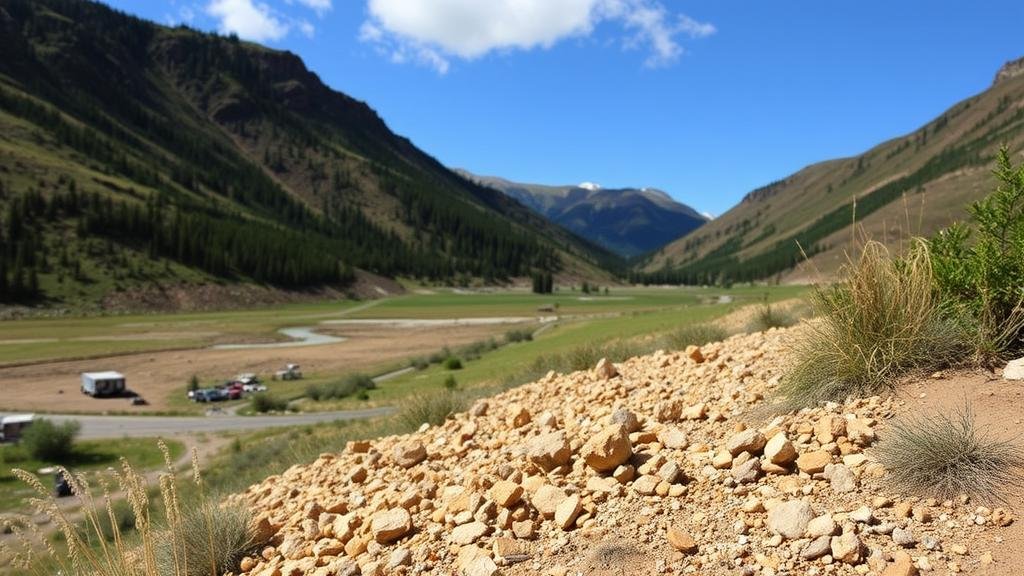Exploring Upland Deposits for Residual Gold Nuggets
Exploring Upland Deposits for Residual Gold Nuggets
Upland deposits are intriguing geological formations that can yield substantial amounts of residual gold nuggets. Understanding the characteristics, formation processes, and exploration techniques associated with these deposits is crucial in the field of mining and geology. This article aims to provide a comprehensive overview of upland deposits, their significance, and methods used in their exploration.
Understanding Upland Deposits
Upland deposits refer to gold concentrations that exist in elevated terrains, often the result of erosion processes over time. e deposits differ from alluvial gold, which is typically found in riverbeds or riverbanks.
Residual gold nuggets are formed through the weathering of primary gold ore bodies, with gold particles being released and concentrated in the surrounding sediment. This process can lead to a significant accumulation of gold in upland locations.
Formation Processes
The formation of upland deposits involves various geological and environmental factors:
- Weathering: The initial breakdown of rocks containing gold occurs due to natural agents such as water, wind, and temperature changes, freeing gold particles from the host rock.
- Erosion: As weathered materials are transported by natural processes, gold nuggets can accumulate in specific locations where sediment settles, leading to concentrated deposits.
- Soil Formation: Over extended periods, the accumulation of organic material combined with mineral content can create fertile soil layers that may conceal nuggets beneath the surface.
Significance of Upland Gold Deposits
The exploration of upland gold deposits is significant due to several factors:
- Economic Value: Residual gold nuggets often have higher purity and can fetch higher prices compared to gold extracted from lower-grade ore bodies.
- Accessibility: Upland deposits are often located in regions that can be more accessible than traditional mining sites, potentially reducing operational costs.
- Environmental Considerations: Mining in elevated terrains may utilize less invasive methods compared to deep excavation, presenting a lower environmental footprint.
Exploration Techniques
Effective exploration of upland deposits requires a combination of geological surveys, sampling, and modern technology:
- Geological Mapping: The initial phase involves creating detailed maps of the terrain to identify plausible upland gold occurrences based on geological history.
- Soil Sampling: Collecting and analyzing soil samples helps in determining where residual gold may be concentrated, allowing for targeted exploration.
- Geophysical Surveys: Techniques such as magnetic and resistivity surveys can provide insights into subsurface characteristics that are not visible through surface-level assessments.
Case Studies: Successful Upland Gold Exploration
Several mining companies have successfully implemented exploration strategies for upland deposits resulting in profitable findings. Notable examples include:
- Victorian Goldfields, Australia: This region is known for rich upland residual deposits, where companies used advanced geological mapping and soil sampling to achieve significant gold discoveries in areas previously overlooked.
- Klondike Region, Canada: During the Klondike Gold Rush, prospectors discovered upland deposits that produced large nuggets, leveraging the erosive landscape to guide their extraction efforts.
Challenges in Exploring Upland Deposits
Despite their potential, exploring upland deposits comes with its own set of challenges:
- Terrain Difficulty: Steep and rugged terrain often complicates access, making exploration physically demanding and requiring special equipment.
- Environmental Regulations: Mining operations must adhere to stringent environmental laws that can limit activities, making it essential to conduct thorough assessments beforehand.
- Resource Limitations: High exploration costs combined with uncertainty in the quality and quantity of the deposits can deter investment.
Conclusion and Takeaways
Upland deposits offer a unique avenue for discovering residual gold nuggets, highlighting the importance of a systematic approach in exploration. By employing a combination of geological examination and modern technology, successful mining operations can be established in these elevated terrains.
For prospectors and mining companies interested in upland deposits, it is vital to:
- Conduct comprehensive geological surveys to identify promising locations.
- Use advanced exploration techniques to minimize risk and maximize the potential yield.
- Stay informed about environmental regulations to ensure sustainable mining practices.
Through a balanced approach that combines technological advances with traditional exploration methods, the promise of residual gold nuggets in upland deposits continues to excite the mining industry.



